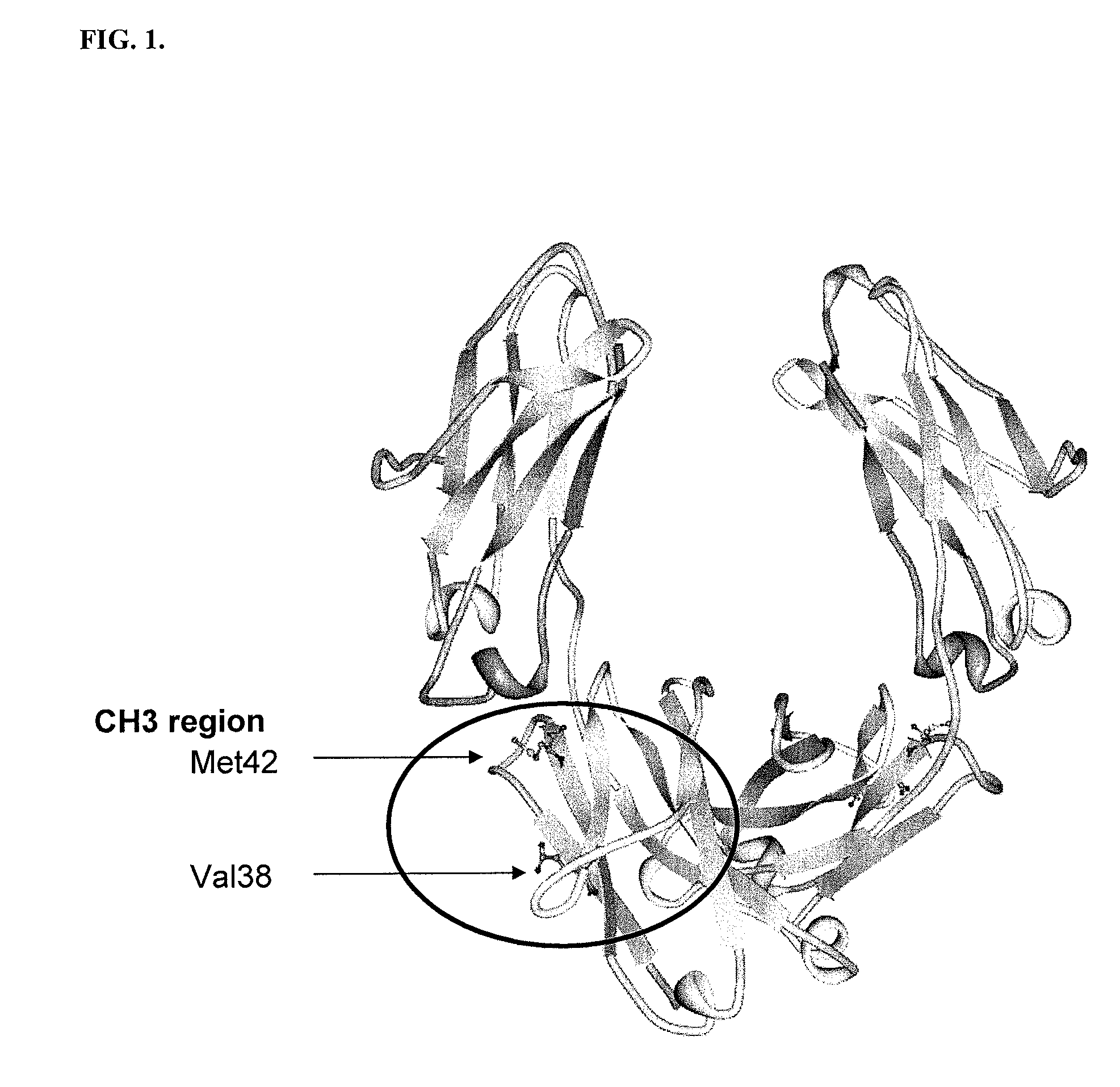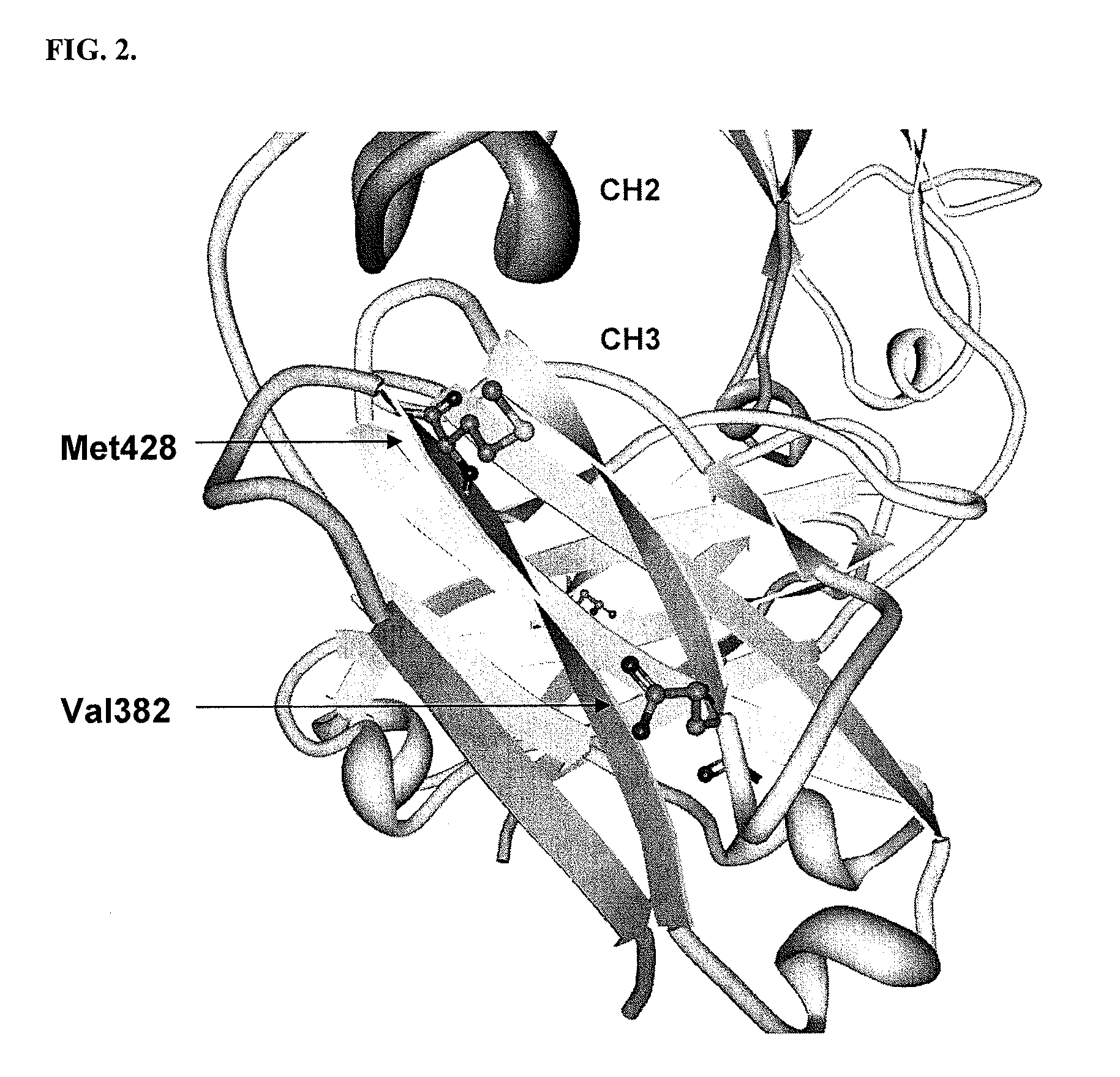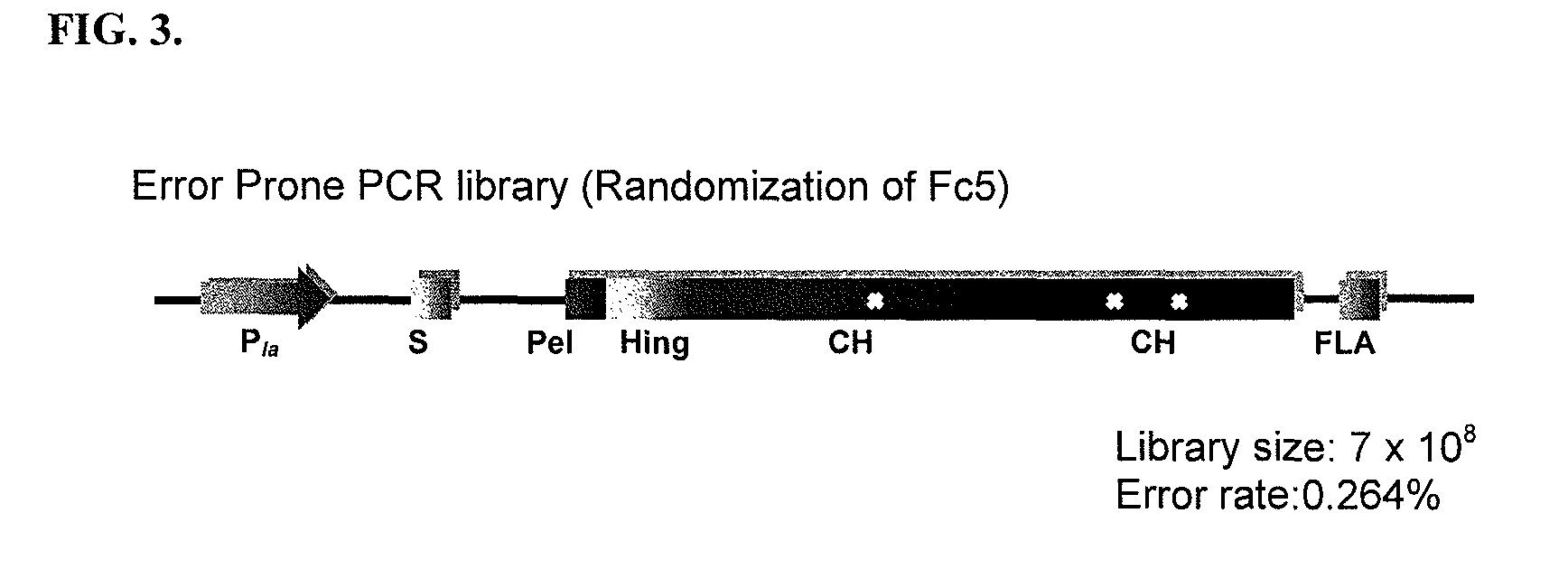Immunoglobulin Fc polypeptides
a technology of immunoglobulin and polypeptides, applied in the field of protein engineering, can solve the problems of lack of efficacy and rapid clearance due to patient production of human anti-mouse antibodies (hama), time and cost consuming related to the technology, and inability to elicit ad
- Summary
- Abstract
- Description
- Claims
- Application Information
AI Technical Summary
Benefits of technology
Problems solved by technology
Method used
Image
Examples
example 1
Combinatorial Library Construction for Engineering Fc5
[0205]All plasmids and primers used in this study are described in Table 3 and Table 4. For the screening of IgG1 Fc fragments exhibiting higher binding affinity to FcγRI than the previously isolated Fc fragment (Fc5, containing amino acid substitutions E328V / M4281) (FIGS. 1 and 2), the Fc5 gene was subjected to random mutagenesis by error prone PCR. Standard error prone PCR method (Fromant et al., 1995) was employed with the template of the pPelBFLAG-Fc5 and two primers (STJ# 196 and STJ#197) synthesized from Integrated DNA Technologies (Coralville, Iowa). The amplified PCR fragments were ligated into SfiI digested pPelBFLAG. The resulting plasmids were transformed into E. coli Jude-1 (F′ [Tn10(Tetr) proAB+ lacIq Δ(lacZ)M15] mcrA Δ(mrr-hsdRMS-mcrBC) φ80dlacZΔM15 ΔlacX74 deoR recA1 araD139 Δ(ara leu)7697 galU galKrpsL endA1 nupG) (Kawarasaki et al., 2003). Based on the sequence of 20 library clones randomly selected, the library ...
example 2
Spheroplasting and High Throughput Flow Cytometry Screening for Affinity Maturation of Fc5
[0206]The library cells cultured overnight at 37° C. with 250 rpm shaking in Terrific Broth (Becton Dickinson Diagnostic Systems Difco™, Sparks, Md.) with 2% (wt / vol) glucose supplemented with chloramphenicol (50 μg / ml) were diluted 1:50 in fresh TB media containing 0.5 M trehalose (Fisher Scientific, Fair Lawn, N.J.) and chloramphenicol (40 μg / ml). After 3 h incubation at 37° C. with 250 rpm shaking and then 20 min cooling at 25° C., the expression of Fc fragments was induced with 1 mM isopropyl-1-thio-β-D-galactopyranoside (IPTG). After 5 hours culture at 25° C., 4.5 ml of the culture broth was harvested by centrifugation and washed two times in 1 ml of cold 10 mM Tris-HCl (pH 8.0). After resuspension in 1 ml of cold STE solution (0.5 M Sucrose, 10 mM Tris-HCl, 10 mM EDTA, pH 8.0), the cells were incubated with rotating mixing at 37° C. for 30 min, pelleted by centrifugation at 12,000×g for 1...
example 3
Sequences of Selected Clones Displaying Higher Affinity Binding to FcγRIa than Fc5
[0209]Fc5 (Nucleotide Sequence #2 and Protein Sequence #2) have 2 mutations (E382V and M428I) in the sequence of wild type IgG1-Fc (Nucleotide Sequence #1 and Protein Sequence #1). The engineered Fc mutants exhibiting higher affinity to FcγRIa than Fc5 have substitution mutations in the sequence of Fc5. Isolated Fc mutants, Fc601-Fc619 (Protein Sequence #3˜#21), have substitution mutations in the sequence of Fc5. The isolated mutants are summarized in Table 5.
PUM
| Property | Measurement | Unit |
|---|---|---|
| pH | aaaaa | aaaaa |
| pH | aaaaa | aaaaa |
| equilibrium dissociation constant | aaaaa | aaaaa |
Abstract
Description
Claims
Application Information
 Login to View More
Login to View More - R&D
- Intellectual Property
- Life Sciences
- Materials
- Tech Scout
- Unparalleled Data Quality
- Higher Quality Content
- 60% Fewer Hallucinations
Browse by: Latest US Patents, China's latest patents, Technical Efficacy Thesaurus, Application Domain, Technology Topic, Popular Technical Reports.
© 2025 PatSnap. All rights reserved.Legal|Privacy policy|Modern Slavery Act Transparency Statement|Sitemap|About US| Contact US: help@patsnap.com



